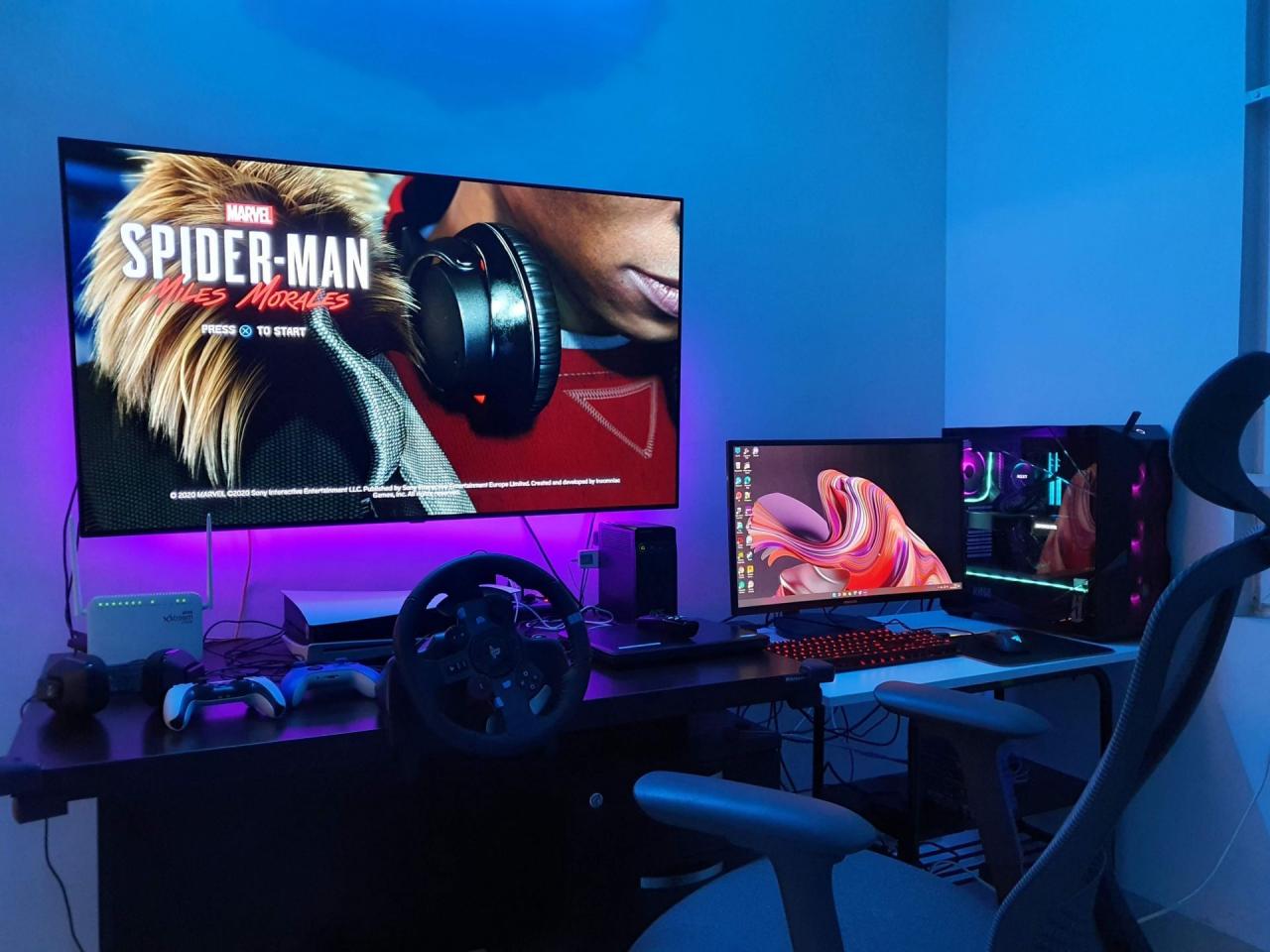Building the Ultimate Gaming PC: 4K Powerhouse Costs

The pursuit of the ultimate gaming machine is a perennial quest. Every year, new graphics cards, processors, and lightning-fast memory hit the market, promising levels of visual fidelity and performance that were unthinkable just a few months prior.
As we look into 2025, the “High-End PC” is no longer just about fast frame rates; it’s about maxing out 4K resolution, pushing into 8K gaming, and seamlessly integrating AI-driven features like frame generation and neural rendering.
Building a high-end system today is an investment in cutting-edge technology that keeps your gaming experience future-proofed for years.
But what does “high-end” actually cost, and where should you allocate that precious budget? Let’s break down the necessary components and the technologies driving up the price tag to forge your 4K gaming powerhouse.
I. Defining the High-End Tier for 2025

The term “High-End” is subjective, but in the context of 2025 PC gaming, it means aiming for zero compromise. This tier is built for gamers who demand:
A. Maximized Resolution: Consistent, high frame rate gaming at 4K (3840 x 2160) resolution, and the capability to venture into 8K territory for simulation or specific titles.
B. Highest Refresh Rates: Driving 144Hz, 165Hz, or even 240Hz monitors at 1440p (QHD) for competitive esports titles.
C. Ray Tracing at Full Power: Running complex Path Tracing and Ray Tracing effects with minimal performance impact, often relying on advanced upscaling technologies.
D. Future-Proof Connectivity: Utilizing the latest standards like PCIe 5.0/6.0 and DDR5/DDR6 to ensure modern GPUs and SSDs run at maximum speed.
Based on current market trends and component costs, a true High-End Gaming PC build in 2025 typically starts in the range of $2,500 USD and can easily soar past $4,000 USD depending on the degree of customization, cooling, and aesthetic choices.
II. The King Component: Graphics Processing Unit (GPU)
The Graphics Card is, without question, the single most expensive and important component in a high-end gaming PC. It should command the largest share of your budget—often 40% to 50% of the total cost. This is the piece of hardware that handles everything from rendering massive open worlds to executing complex lighting calculations.
A. The 2025 Top Tier: In 2025, we are looking at the flagship cards from the major players, such as the NVIDIA GeForce RTX 5080/5090 series or the AMD Radeon RX 9000-series (e.g., RX 9900 XTX). These cards feature massive amounts of VRAM (16GB to 32GB of GDDR6X/GDDR7), which is crucial for 4K and texture-heavy games.
B. AI Acceleration: A key reason these cards are so expensive is the dedicated silicon for AI and Ray Tracing. NVIDIA’s Tensor Cores and AMD’s AI Accelerators are essential for running technologies like DLSS (Deep Learning Super Sampling) 4 or FSR (FidelityFX Super Resolution). These AI upscaling tools are no longer optional; they are the necessary ingredients to push frame rates higher at max settings.
C. Cost Expectation: For a flagship GPU capable of maxing out current AAA titles at 4K, expect to spend anywhere from $1,500 to over $2,500 USD.
III. The Brains of the Operation: Central Processing Unit (CPU)
While the GPU handles the visuals, the CPU manages everything else: game logic, AI behavior, physics, and feeding instructions to the GPU. For high-end gaming, you need a powerful processor that won’t bottleneck your expensive graphics card.
A. Leading Gaming CPUs: The leading contenders are usually the top-tier chips like the AMD Ryzen 9 9950X or the Intel Core i9-15900K. However, for pure gaming performance, the AMD Ryzen 7 9800X3D series often offers incredible value due to its large 3D V-Cache, which dramatically speeds up game-specific operations.
B. Core Count vs. Clock Speed: For gaming, you don’t necessarily need the absolute highest core count (like a 24-core workstation chip). What you need are high single-core clock speeds and sufficient core counts (typically 8 to 12) to handle modern game threads and background applications like streaming or Discord.
C. Platform Investment: Choosing a CPU dictates your motherboard chipset (e.g., Intel Z890 or AMD X870). These high-end motherboards are expensive because they offer the best power delivery (VRMs), which is necessary for stable overclocking and unlocking the full potential of the CPU.
D. Cost Expectation: A top-tier CPU and a high-end Motherboard will likely run you between $700 and $1,200 USD.
IV. The Memory and Storage Revolution

The speed at which your computer can access data is just as important as how fast it can process it. In 2025, the storage and RAM landscape is entirely defined by new, blazing-fast standards.
A. System Memory (RAM)
- DDR5 is the Standard: DDR5 is now the baseline for any new high-end build, offering far greater bandwidth and efficiency than its predecessor, DDR4.
- Capacity Requirement: 32GB of DDR5 RAM is the recommended standard. While 16GB is often sufficient for just playing a game, 32GB handles background tasks, streaming, and future-proofs you for resource-hungry games, especially those utilizing AI-driven background processes.
- Speed is Key: Look for high-frequency kits, typically 6000MHz to 7200MHz, with low CAS Latency (CL30 to CL36). These specific speeds are crucial for maximizing performance on modern CPU architectures.
- Cost Expectation: A high-quality 32GB (2x16GB) DDR5 kit costs approximately $100 to $200 USD.
B. Storage (SSD)
- PCIe 5.0 SSDs Dominate: The biggest leap in storage is the widespread adoption of PCIe Gen 5.0 NVMe SSDs. These drives offer sequential read speeds often exceeding 10,000 MB/s, which is vital for new game engine technology like Microsoft’s DirectStorage. DirectStorage allows the GPU to load game assets directly from the SSD, bypassing the CPU bottleneck and drastically cutting down loading screens.
- The Capacity Choice: For a high-end rig, 2TB is the bare minimum for primary storage, given that modern AAA games often exceed 100GB each. Many builders opt for a primary 2TB Gen 5 SSD for the OS and main games, coupled with a secondary, more affordable 4TB Gen 4 SSD for bulk storage.
- Cost Expectation: A single 2TB PCIe 5.0 NVMe SSD can cost between $200 and $350 USD.
V. The Unsung Heroes: Power and Cooling
These components are less glamorous than the GPU or CPU, but they are absolutely essential for a stable, quiet, and long-lasting high-end system. Cutting corners here is the surest way to invite performance issues.
A. Power Supply Unit (PSU)
- Wattage Requirements: Modern high-end GPUs (especially the RTX 50-series) draw immense power. For a flagship build, a 1000W to 1300W unit is necessary to handle peak power draw (transient spikes) and ensure stability, especially if you plan to overclock.
- Efficiency Rating: Always prioritize a high efficiency rating, specifically 80 PLUS Gold or Platinum. This certification ensures the PSU wastes less power as heat, leading to lower electricity bills and less noise.
- ATX 3.0 Standard: Crucially, the PSU must support the ATX 3.0 standard and feature the new 12VHPWR connector (or 12V-2×6) specifically for the newest NVIDIA graphics cards. This guarantees the PSU can deliver the required power spikes without issues.
- Cost Expectation: A high-quality 1200W Platinum PSU costs around $200 to $350 USD.
B. Cooling System
- Heat is the Enemy: Top-tier CPUs and GPUs generate enormous heat. To unlock their maximum performance (via “boosting”), you need serious cooling.
- Liquid Cooling Dominance: All-in-One (AIO) Liquid Coolers with a 360mm radiator are the standard for high-end CPUs. For the truly extreme enthusiast, custom open-loop liquid cooling systems—which circulate coolant through both the CPU and GPU—are the only way to achieve maximum thermal efficiency and aesthetics, though they come with a significant cost premium and complexity.
- High-Airflow Case: All that heat needs to go somewhere. The PC case must be a high-airflow model, prioritizing mesh panels and massive fan support over solid glass or metal fronts.
- Cost Expectation: A premium 360mm AIO cooler runs about $150 to $250 USD. A suitable high-airflow case adds another $100 to $250 USD.
VI. The Final High-End PC Cost Breakdown (Estimated 2025)
Here is a look at how the budget for a top-tier, no-compromise 4K gaming PC breaks down. Note: Prices are based on general 2025 market estimates for premium components.
| Component | Example Tier | Estimated Cost (USD) | Budget Share |
| GPU | RTX 5090 / RX 9900 XTX | $1,800 – $2,500 | 45% – 50% |
| CPU | Ryzen 7 9800X3D / i9-15900K | $400 – $650 | 10% – 15% |
| Motherboard | X870 / Z890 High-End Chipset | $350 – $500 | 8% – 10% |
| RAM | 32GB DDR5-6400+ CL30 | $150 – $250 | 3% – 5% |
| Storage | 2TB PCIe 5.0 NVMe SSD + 4TB Gen 4 SSD | $350 – $500 | 8% – 10% |
| PSU | 1200W 80+ Platinum ATX 3.0 | $250 – $350 | 5% – 8% |
| Cooling | 360mm AIO Liquid Cooler | $150 – $250 | 3% – 5% |
| Case & Fans | High-Airflow Full Tower | $150 – $250 | 3% – 5% |
| Operating System | Windows 11 License | $100 – $150 | 2% – 3% |
| TOTAL ESTIMATE | $3,700 – $5,350 USD | 100% |
Conclusion
The price tag on a truly high-end gaming PC in 2025 is substantial, placing it firmly in the luxury consumer electronics category. However, this cost is not arbitrary; it represents the investment required to access the bleeding edge of interactive entertainment.
The year 2025 marks a critical inflection point where hardware is not just faster, but smarter. The massive computational power and cost are driven by three non-negotiable technologies that are defining the next era of gaming: 4K/8K rendering, hardware-accelerated Ray Tracing, and AI-driven upscaling and game logic.
These features push visual fidelity beyond simple photorealism and enable the dynamic, living worlds promised by next-generation game engines. The budget is not just paying for a high core count; it’s paying for the dedicated AI silicon within the GPU that makes seamless 4K/144fps possible.
Furthermore, the high price is an entry ticket to future-proofing. By investing in a high-wattage ATX 3.0 Power Supply, a robust Z890/X870 motherboard, and fast PCIe 5.0 storage, the builder ensures that the system will remain relevant for the inevitable component upgrades of the late 2020s—especially the move toward PCIe 6.0 and potentially consumer DDR6 which, while not mainstream in 2025, requires a strong foundational platform.
Ultimately, building the ultimate gaming PC is an act of meticulous engineering and passion. It’s an acknowledgment that the most immersive, visually stunning, and competitive gaming experiences require the best that modern technology can offer.
This high-end machine is a declaration that the player values performance above all else, securing their place at the forefront of the digital frontier for years to come. The investment is steep, but the reward is a gaming experience that is completely uncompromised, delivering the highest frame rates, the deepest immersion, and the fastest loading times available anywhere.